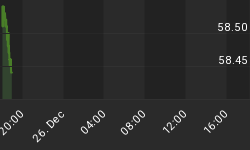Let's look at Inflowing Liquidity levels. Positive and expanding Liquidity levels mean that money is moving into a sector or business ... be it a bank, the stock market, or an investment.
When a bank is seeing more and more depositors bringing in money, the bank's liquidity inflows are increasing. With such a condition, the bank is able to make more loans and increase their profits from the activity.
The stock market is similar. If more money is moving into the stock market, Liquidity Inflows are rising and the market rallies up.
Sometimes investors get faked out because popular indicators might show a weak condition, but the market acts contrary by remaining strong. Typically, in such a case, Inflowing Liquidity levels are extremely high and still flowing in.
Last week we had a sharp one day drop that scared many investors. What were the Liquidity Inflow levels then and now?
Looking at the chart below, you can see that there was a sharp drop in Liquidity inflows ... BUT, Liquidity levels remained extremely high in spite of the drop. That suggested that many investors bought on the dip.
Is there anything pointing to possible market softness in the short term?
Actually there is ... look at the red Liquidity flow line in the chart below, and you will see that it just made a lower/low. That says that a larger amount of money is leaving the market on each selling spurt. In spite of that, the NYA Index is making higher/highs. That means there is a negative divergence between Liquidity and the market's up movement.
Sooner or later, things in this world eventually come back into balance, with divergences disappearing. Divergences are out of balance conditions, and like all the others, this one will rebalance itself as well.

















